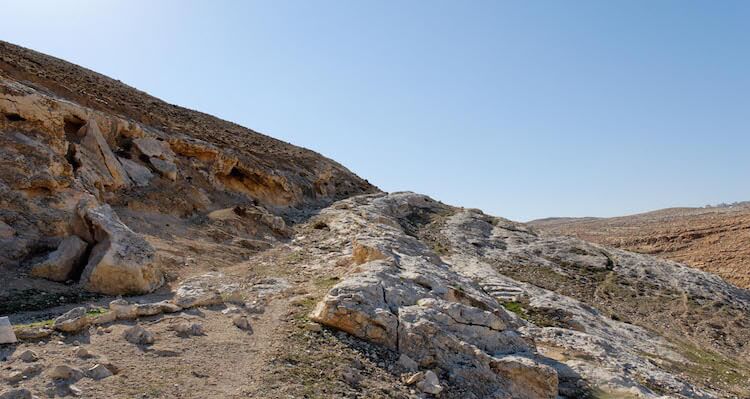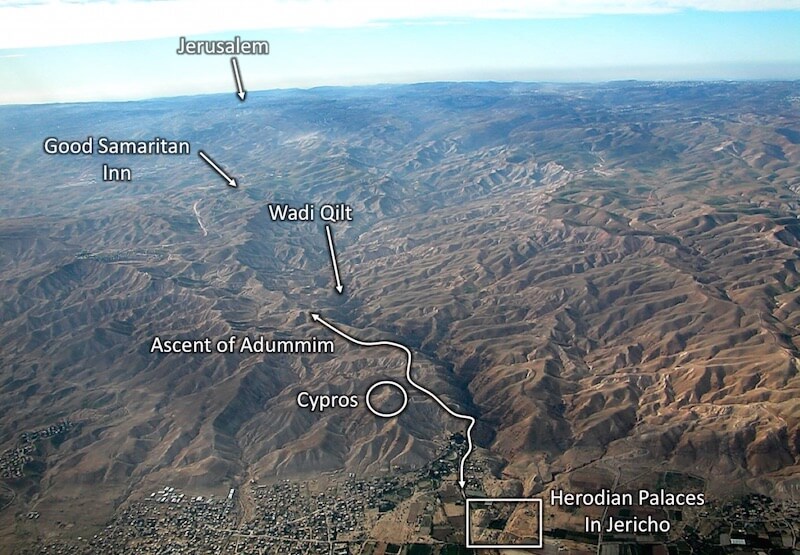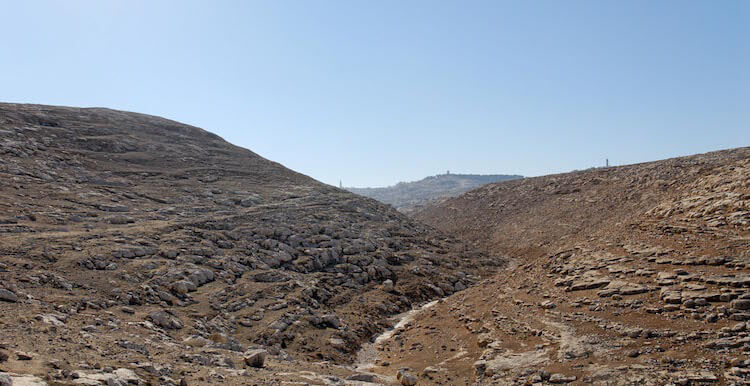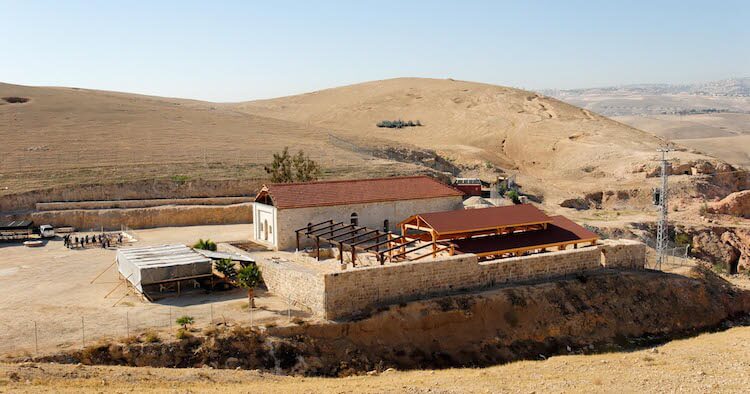On Jesus’ final journey to Jerusalem, He passed through Jericho. Leaving town, He would have walked between the palace buildings of Herod the Great, the king of Jews when Jesus was born.

(Photo: The Ascent of Adummim Roman road. Courtesy of the Pictorial Library of Bible Lands)
The opulent palace straddled the ancient road Jesus traveled and connected to itself across a bridge that spanned the road. When Jesus passed beneath the bridge between the buildings of Herod the Great, He must have considered this paranoid king who tried to kill Him as a boy in Bethlehem.
Ironically, King Herod died in this Jericho palace while the true King of Israel lived to pass between its walls on His way to lay down His life.
As Jesus and His disciples leaned uphill toward Jerusalem, they walked a well-traveled road called the “Ascent of Adummim.” This wasn’t the first time Jesus walked this road.
Nor was it the first time He used it as a setting for teaching us a lesson.

(Photo: Ascent of Adummim aerial. Courtesy of the Pictorial Library of Bible Lands)
The ascent of Adummim, which is on the south of the valley. — Joshua 15:7
The Ascent of Adummim
This road up to Jerusalem from Jericho was known as the “Ascent of Adummim,” meaning “ascent of the red places,” probably because of the red rocks there.
- This journey was a tough hike. Walking uphill almost 3,500 feet in elevation, over a relatively short distance—ears popping, brow sweating, heart pounding—I can imagine the disciples griping about taking the long way to Jerusalem instead of the shortcut through Samaria.
- In the third century, Eusebius identified the road with the village called Maledonmnei. The Latin name for the city refers to it as the “ascent of bloodstains,” probably because of the blood spilled there by thieves.
Even today, Bedouins of shady character dwell in and among the hills, and traveling alone is foolhardy.
The Setting for the Parable of the Good Samaritan
Jesus used the Ascent of Adummim as the setting for His parable of the “good Samaritan,” a complete oxymoron to the first-century Jew (everyone knew that Samaritans weren’t “good”).

(Photo: The Mount of Olives in the distance along Ascent of Adummim. Courtesy of the Pictorial Library of Bible Lands)
In Jesus’ parable, the man who fell among thieves lay ignored by two elite Jews—a priest and a Levite—and only the detested Samaritan stopped to help. Only the Samaritan stopped. Earlier, only a Samaritan leper returned to thank Jesus, too (see Luke 17:11-19).
The disciples didn’t connect the dots.
- They just remembered that the Samaritans caused this difficult detour to begin with by refusing to allow Jesus to take the shortcut through Samaria.
- The disciples overlooked the Samaritan leper’s gratitude, and the Samaritan woman’s repentance, and the parable of the good Samaritan’s mercy along the very road they walked.
- They also forgot Jesus’ rebuke of their misplaced anger when James and John wanted to call down fire on the Samaritans (see Luke 9:54)!
The Samaritans modeled Jesus’ example of sacrifice better than the disciples did.

(Photo: The modern Good Samaritan Inn. Courtesy of the Pictorial Library of Bible Lands)
The Ascent of Adummim—A Tough Hike
Today, the “Inn of the Good Samaritan” sits on the modern road up to Jerusalem, some distance south of the true road Jesus walked.
- The building reminds me of the parable and of the disciples’ complete blindness to Jesus’ mission.
- Jesus came to give of Himself rather than to exalt Himself.
The Ascent of Adummim causes me to examine how my personal agenda can blind me to God’s bigger plan.
This, above all else, makes it a tough hike.
Tell me what you think: Do you ever replace Jesus’ goals with your own? To leave a comment, just click here.
This great video explains the Ascent of Adummim in detail:
 Like This Post? Get the Whole Book!
Like This Post? Get the Whole Book!
This post is adapted from Wayne’s book, Walking in the Footsteps of Jesus: A Journey Through the Lands and Lessons of Christ.
• Enjoy an engaging, inspiring, and humorous travelogue that mingles the life-changing truths of Jesus with a walking tour of the Holy Land.
• Experience the Holy Land through the sights, sounds, and tastes of this personal travelogue, and discover how these sacred places influenced the lessons Jesus taught.
You will discover lessons Jesus has for your life.
